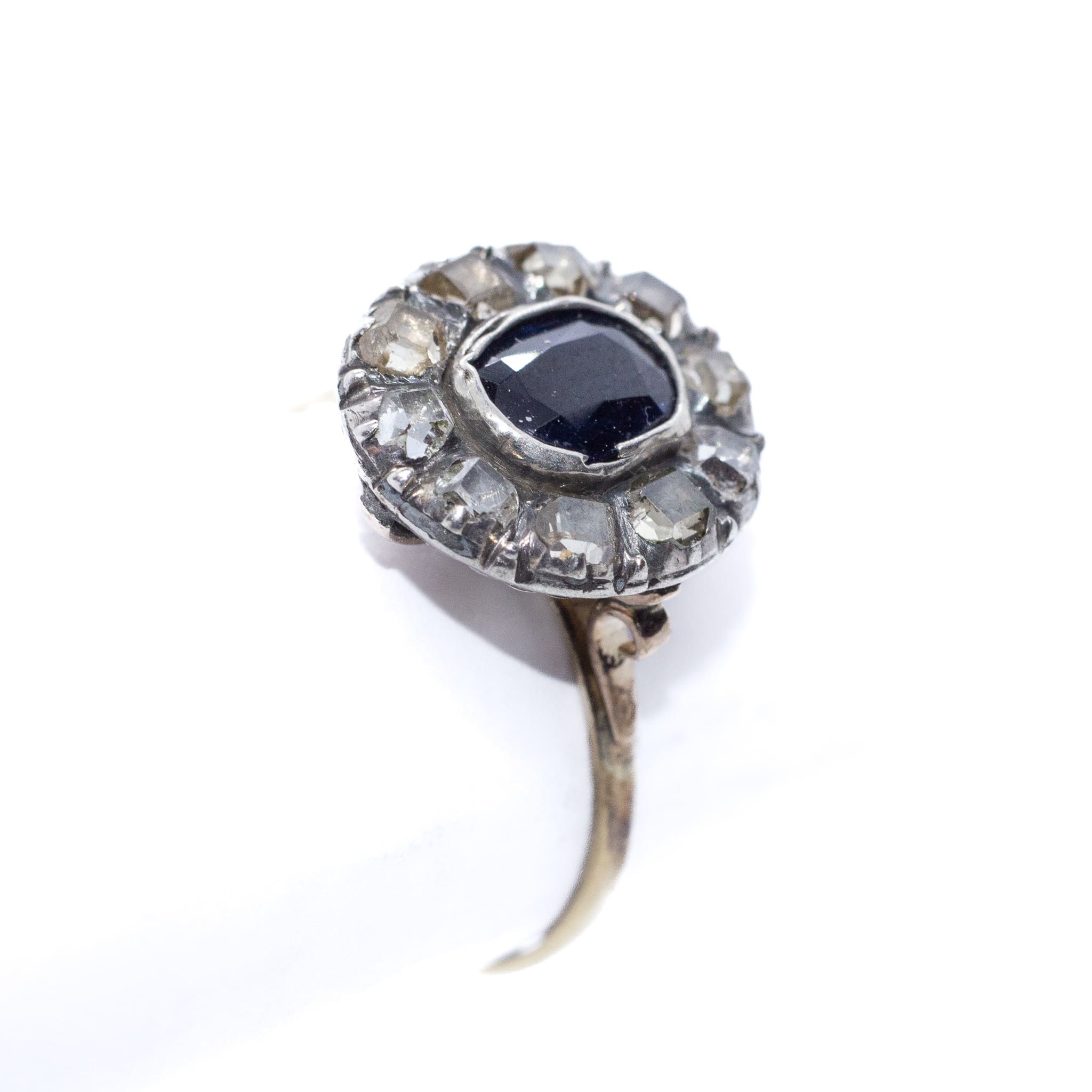June 20, 2024
Admin
2982

Some time ago I purchased a lot of just over twenty rings from a rather well-known auction house specializing in the sale of jewelry. The auction was online, just one photo and the rings, inevitably, partially covered each other. The description, rather summary, did not refer to the period but many seemed to be at least from the 1950s, some from the early 1900s and a couple even ancient.
The lot was duly delivered to us in the shop a few days after the auction and was still closed, secured and opened only the following day.
One ring in particular immediately caught my attention. Ultimately nothing special, a classic "daisy" ring with a row of diamonds and a sapphire in the center, not very clean to say the least because, as everyone who deals with it on a daily basis knows, unfortunately, the diamond is a mineral which attracts dirt in a truly unique way.
Any jewel that has diamonds, especially a ring that is used daily, in direct contact with the skin, should be cleaned at least every six to seven months.
So imagine the condition of a diamond jewel that hadn't been cleaned for decades. After twenty minutes in the ultrasound tank our ring has a completely different appearance. The stones now appear well separated from each other and the gold regains its original color.
The stones in fact. Those diamonds, in particular their cut, had intrigued me from the first observation under the lens. I have been buying and selling antique jewelery for over thirty years and I have never seen that type of cut in a diamond. Oh God, never no because I remembered having already seen something similar in sketches and drawings relating to the diamond and the history of the cut. However, I still have some doubts, it could just be particularly beautiful rosettes obtained from a blank already prepared with an unexpectedly smooth surface or who knows what else.
I show the ring to Graziano Gensini, director of the Gemological Institute of Florence, who confirms my impression. “I'm table cut” he tells me without a shadow of a doubt. He himself confesses to me that he has never seen one live.
At this point it is necessary to open a small parenthesis. For a very long period, let's say between 1300 and the end of the 1600s, the only diamonds that could be found on the market in Europe came from India. More precisely from Golconda, today just a beautiful archaeological site on the outskirts of Hyderabad, capital of the new (year 2014) state of Telangana. But the rulers in Golconda during this long period (the various sultanates before and the Mughals after) did not send all the diamonds to Europe because the most beautiful, the perfect octahedrons, kept them for themselves and in Venice (the first and only, for a long time, center of diamond cutting in Europe) only arrived in rough waste or almost so.
And this is perhaps the reason why the Venetian cutters, the so-called "diamond cutters", became absolute masters in this very difficult art. Because, precisely, they were in a certain sense forced to work particularly hard to extract well-cut and therefore commercially attractive diamonds from extremely irregular and therefore difficult to work rough diamonds.
This first with the "point cut", then with the "table cut" and finally with the more advanced Mazzarino and Peruzzi cuts. The "table cut" was most likely their invention and in any case the first cut worthy of the name. The first that truly responded to what is the ultimate goal of a well-made and proportionate cut: to send as much light as possible back to the eyes of those looking at the stone.
Its predecessor, the first cut, the "point cut" often did not even differ much from the rough itself as, in most cases, it was just a roughly pointed stone. The "table cut" was a notable step forward in being able to "tame" the hardest material on earth.
But why is it so difficult to find “table cuts” today. Simply because as technology progressed, diamonds were cut into the cut that was the most current at the time.
Even today it is common practice to cut out, for example, an "old mine" in a modern "round cut" with 57 facets, especially if this, after cutting, falls into the "colorless" range with minimal inclusions and therefore with a (usually not exaggerated) weight loss achieves a greater economic return.
This of course only if the old cut is loose and not mounted on an antique jewel where instead the, so to speak, antiquarian value of the jewel usually more than compensates for the lesser brilliance and lesser "fire" of the stones. The "table cut" was the predominant cut throughout the 16th and a good part of the 17th century even when its successor, the "single cut" was already present which is then the basis of today's "round brilliant" cut.
Our ring dates back to the end of the 17th century, most likely French goldsmith craftsmanship. You have the opportunity to see it in a video on the website of the Florentine Gemmological Institute and among the products of Toscana Oro & A.
Lorenzo Capparelli
Toscana Oro & A. and Tuscan Gemological Center
Category:
LATEST PRODUCTS
RELATED POST
Collection
Contact Us
Call Us
055 068 0801Write us an email
info@toscanaoro.itToscana Oro & A. srl © 2025. All rights reserved. TOSCANA ORO & A S.R.L. VIA GUIDO MONACO 26C 50144 FIRENZE (FI) | P.IVA 06338360487 - Privacy Policy - Cookie Policy - Termini d'Uso